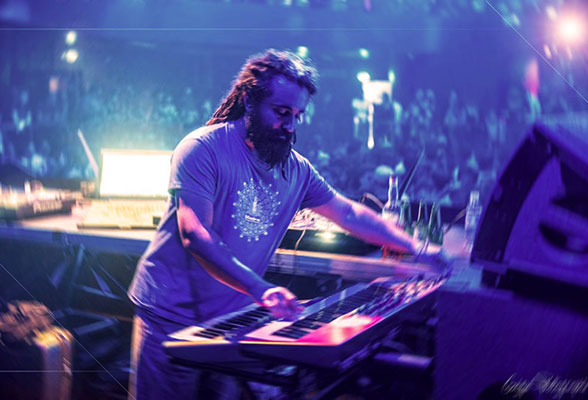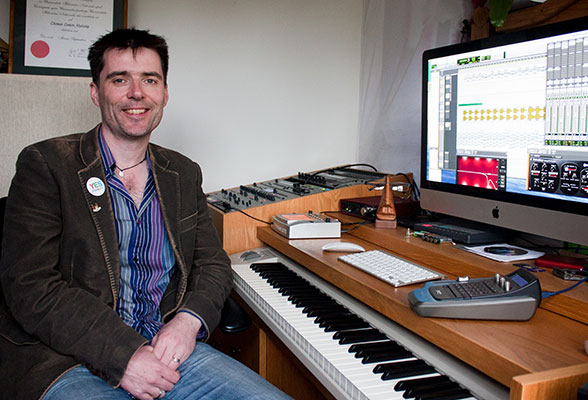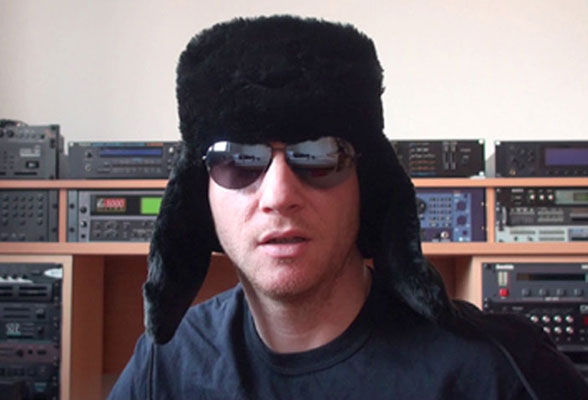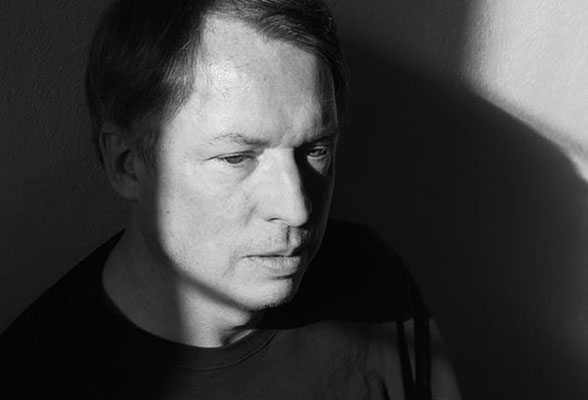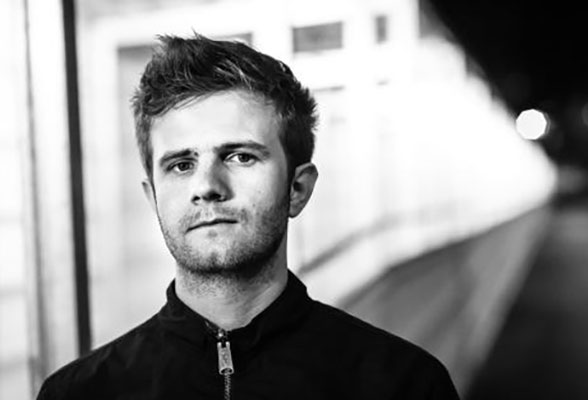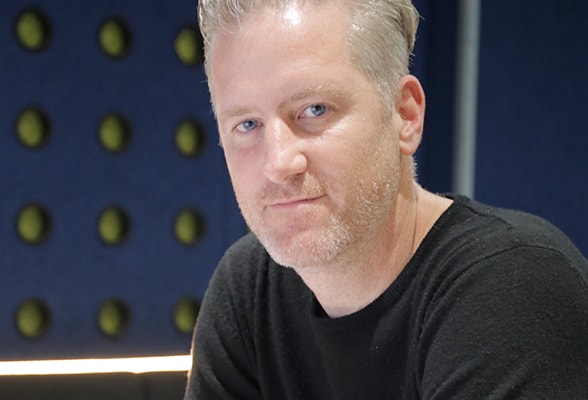CZ V
Metamorfosis de distorsión de fase.
CZ V es una reinvención virtual de los sintetizadores CZ-1 y CZ-101 de Casio®, que se diseñaron como respuesta a los instrumentos FM de los 80. Explora los sonidos particularmente maleables de la síntesis por distorsión de fase, ahora transformados con la flexibilidad puntera de los plug-ins.
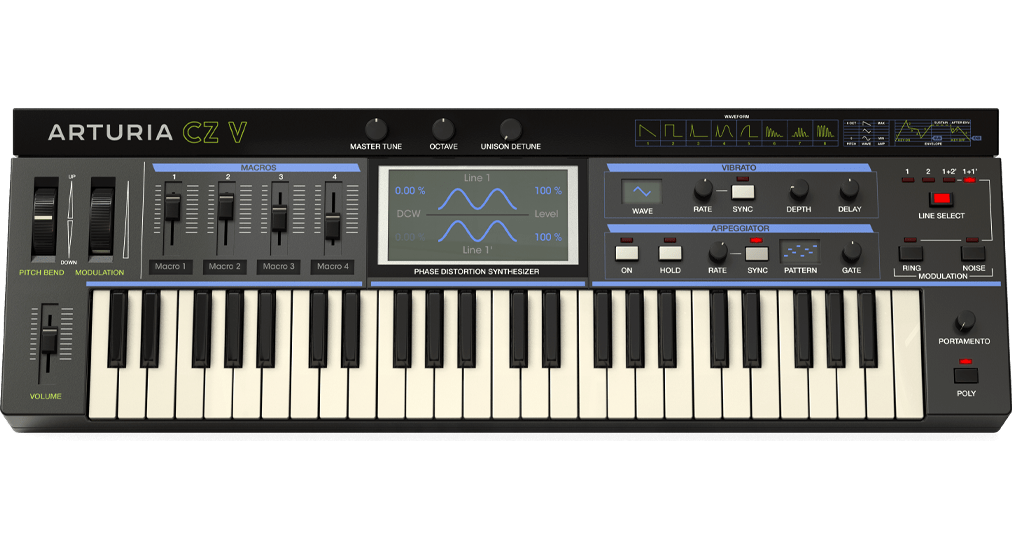
Digital done differently.
Modeling done flawlessly.
La síntesis de distorsión de fase de Casio tenía cosas en común con la síntesis FM, pero era más fácil de usar y lograba tanto timbres “digitales” como “analógicos” con la misma facilidad.
Se convirtió en recurso sonoro habitual de artistas como Eurythmics, Salt-N-Pepa, y de Vince Clarke (Depeche Mode, Yaz, Erasure), famoso por combinar ocho sintes CZ-101 y un secuenciador. El CZ V te da aquello por lo que el CZ fue tan apreciado, y más aún.
Creado por expertos
Nuestro equipo especializado en DSP aplicó ingeniería inversa al código central del CZ y, a continuación, le añadió funciones para que la distorsión de fase resulte aún más interesante en la actualidad.
Asombrosamente versátil
La serie CZ se utiliza en todo tipo de canciones porque produce muy bien muchos sonidos. Deja que CZ V haga lo mismo por ti.
CZ es facilidad de uso
Wringing a ton of sonic range out of just a handful of parameters, CZ V is one of the quickest paths from a sound in your head to sound in your speakers.
Máxima potencia
We amped up the CZ with up to 32 voices of polyphony, four FX slots, eight envelopes, and everything but a flux capacitor.
More than just
a phase
El CZ-101 inventó una nueva forma de crear los sonidos que buscaban teclistas y productores por igual. Esto dio a Casio® visibilidad como fabricante de sintetizadores verdaderamente profesionales. El CZ V vuelve a hacer visible la distorsión de fase con la versión definitiva de esta tecnología revolucionaria de síntesis.
A principios de los 80, Casio no iba a quedarse de brazos cruzados mientras el DX7 se apoderaba del mundo. Afortunadamente, tenían una plataforma sobre la que construir: una estación de trabajo de sintetizador de gama alta llamada Cosmo. Es el antepasado directo de la CZ-101, cuyas miniteclas y $499 de precio pusieron la síntesis real en manos de una nueva generación de músicos.
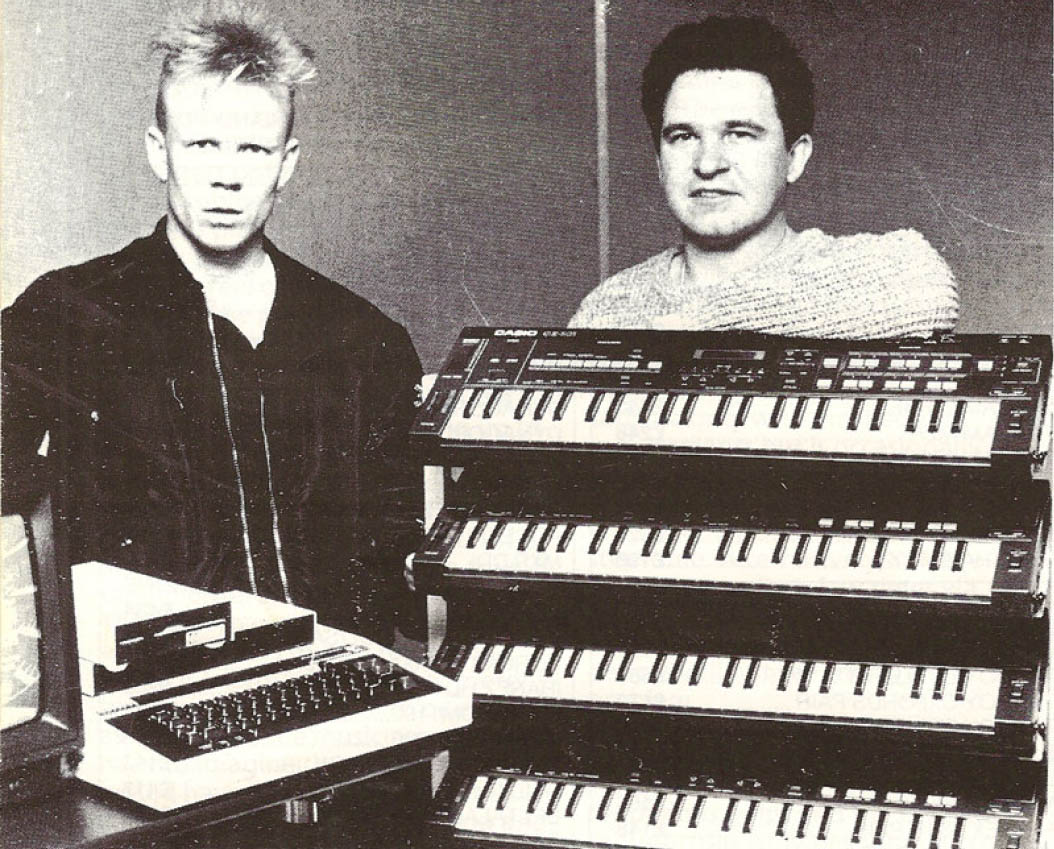
Diseñado originalmente para Isao Tomita, el Cosmo fue la incursión de Casio en el territorio del Synclavier y el Fairlight. Aunque no fue un éxito comercial, este bastidor servidor de unidades de sampler y sintetizador sirvió como campo de pruebas para la distorsión de fase (DP), una técnica de la que fue pionero el ingeniero de Casio Mark Fukuda.
Mientras que en la síntesis FM se modulaba la frecuencia de una forma de onda mediante otra, la síntesis PD modificaba el dominio temporal de la onda portadora. Variando la cantidad de modulación, se podía pasar de una onda sinusoidal a tonos repletos de armónicos complejos. No existía la limitación de usar ondas sinusoidales, como en los sintetizadores DX; las ondas moduladoras (y, por ende, la auténtica forma de onda que se oye) podían moverse entre la sencillez y la complejidad —incluso duplicando ondas analógicas y mucho más.
Lanzado en 1984, el CZ-101 incluía dos "líneas", cada una con sus propias envolventes de tono, cantidad de modulación y volumen. Utilizando una Línea se obtenían ocho voces de polifonía; con dos se reducía a cuatro voces. Algunas modulaciones imitaban un filtro resonante, lo que eliminaba la necesidad de un costoso circuito analógico. Y lo que es más importante, los usuarios encontraron más intuitiva la relación entre el ajuste de uno u otro control y un determinado resultado sónico que la estructura multioperador del DX7.
Entre los modelos posteriores estuvieron en CZ-1000 (1985), de tamaño completo; el CZ-3000, que ofrecía el doble de polifonía; el CZ-5000, que incorporaba un secuenciador de 8 pistas; y el CZ-1 (1986), el modelo de bandera, que incluía un teclado sensible a la velocidad y la postpulsación. Y luego está el CZ V, que elimina todas las limitaciones de los modelos físicos y demuestra que la distorsión de fase tampoco tiene límites.
A different kind of
of distortion
En la distorsión de fase, igual que en la síntesis FM, un oscilador modula a otro.
DCO > DCW > DCA
Cada uno de los DCO del CZ V te permite elegir entre las 8 formas de onda originales o dibujar la tuya propia. Se ofrecen varias combinaciones en serie de dos formas de onda distintas, lo que abre muchas más posibilidades. A continuación de cada DCO hay una sección de transformador de onda con control digital (digitally controlled waveshaper, DCW), que incluye seguimiento de teclado y un generador de envolvente de 8 etapas. Esto aplica animación a la cantidad de transformación de onda mediante el modulador a lo largo del tiempo. También hay una envolvente de ocho etapas para la frecuencia del DCO, lo que permite efectos de cambio de tono que van mucho más allá del vibrato, con trinos y láseres. Un amplificador con control digital (DCA) con su propia envolvente de ocho etapas remata la cadena de señal DCO>DCW>DCA, que resulta más o menos equivalente a la variante analógica VCO>VCF>VCA.
Entre líneas
Igual que el original, el CZ V tiene dos líneas de señal completas DCO>DCW>DCA que puedes usar individualmente o en paralelo. Usar los mismos ajustes en las dos líneas genera un sonido más denso, ya que se pueden transponer o desafinar entre sí, mientras que usar ajustes distintos permite generar timbres mucho más complejos. Por ejemplo, puedes crear un sonido con una forma ultrapercusiva en una línea y un pad en la otra, y producir un timbre compuesto al combinarlas. Otros recursos estupendos que recrean el original incluyen una sección dedicada de vibrato, portamento polifónico, modulación de anillo y modulación de ruido.
Síntesis sencilla
En última instancia, la belleza de la distorsión de fase comparada con la síntesis FM, más popular, es que solo hay cuatro elementos primarios que realmente controlan el timbre de cada una de las líneas del CZ: la forma de onda modulada del DCO y las tres envolventes. Tanto la síntesis PD como la FM han hecho aportaciones significantes e instantáneamente reconocibles a la música pero, irónicamente, el concepto más sencillo de la síntesis PD puede acercarse mucho más a los bajos, metales, cuerdas y demás sonidos analógicos, y con mucho menos esfuerzo.
Nuestro equipo de DSP ha realizado ingeniería inversa del código de la serie CZ e incluso ha modelado las salidas DAC, para ofrecer la combinación perfecta de auténtico comportamiento PD y ese sonido crujiente, casi lo-fi de los 80, directamente en tu DAW.
A CZ for
Today
El CZ-101 tenía una interfaz instantánea e intuitiva, sobre todo tratándose de uno de los primeros sintetizadores digitales. Pero el CZ V es más rápido y más eficaz en todos los aspectos.
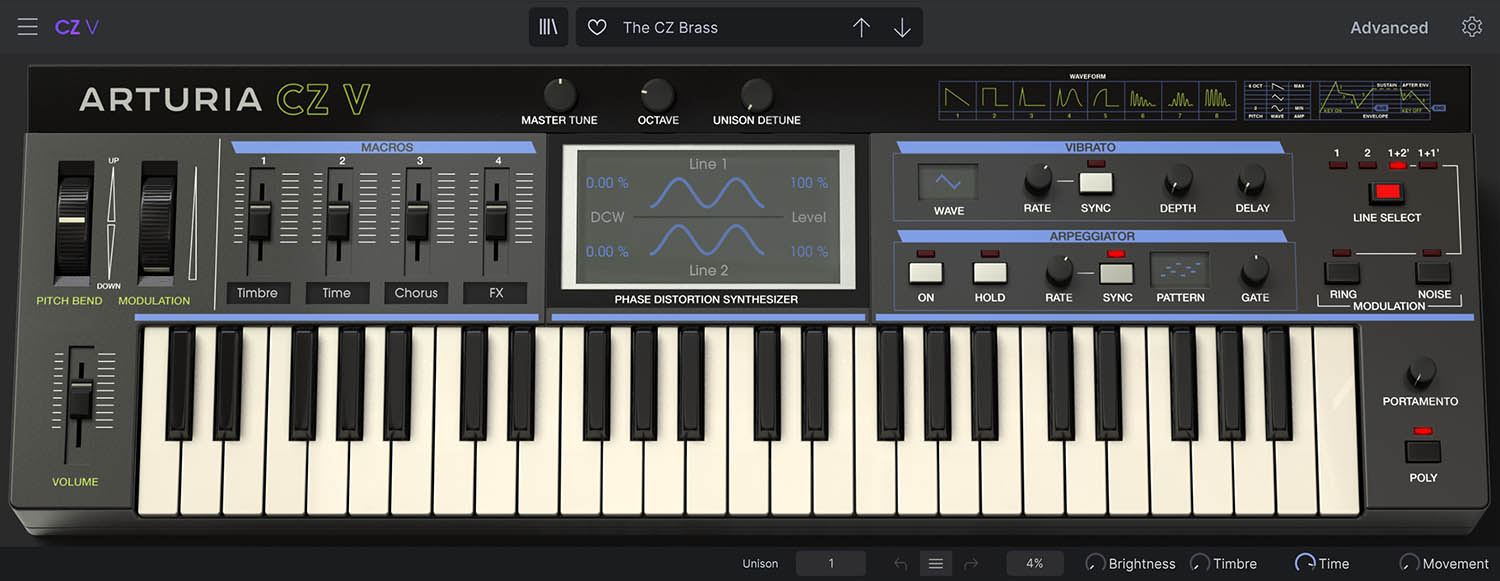
_1
_2
_3
_4
_5
_6
01. Eyes Meet Ears
Observa exactamente lo que le ocurre a tu sonido mientras tocas y las formas de onda se transforman, justo en la zona central de la pantalla.
02. Drop the Bass, Tweak the FX
Observa exactamente lo que le ocurre a tu sonido mientras tocas y las formas de onda se transforman, justo en la zona central de la pantalla.
03. Dedicated Vibrato
Hemos mejorado la sección independiente de vibrato del CZ con más formas de onda, sincronización con el tempo y retardo ajustable.
04. Guilty Pleasure Generator
¿Qué sería un sintetizador de los años 80 sin un arpegiador clásico? El nuestro incluye seis patrones (incluidos los modos de orden al tocar y aleatorio) y un rango de hasta 4 octavas.
05. Line Up
Selecciona qué quieres oír: la línea 1, la línea 2, ambas, o la línea 1 más una copia de sí misma. Y entonces, aplícales modulación de anillo o de ruido aquí mismo.
06. Poly or Mono
Cambia al modo mono para hacer solos gruesos al unísono, y luego vuelve al modo poli para tocar acordes, con un solo botón.
A CZ for
Tomorrow
Una enorme potencia de síntesis se esconde bajo la superficie en el Panel Avanzado de CZ V. Lo hemos hecho todo divertido y fácil de usar.
Si se hubiera empaquetado tanta capacidad en el hardware, la distorsión de fase podría haberse convertido en el método de síntesis dominante en la música. Nuestra interfaz avanzada hace que sea más intuitivo que nunca ver hasta dónde puede llegar la DP.
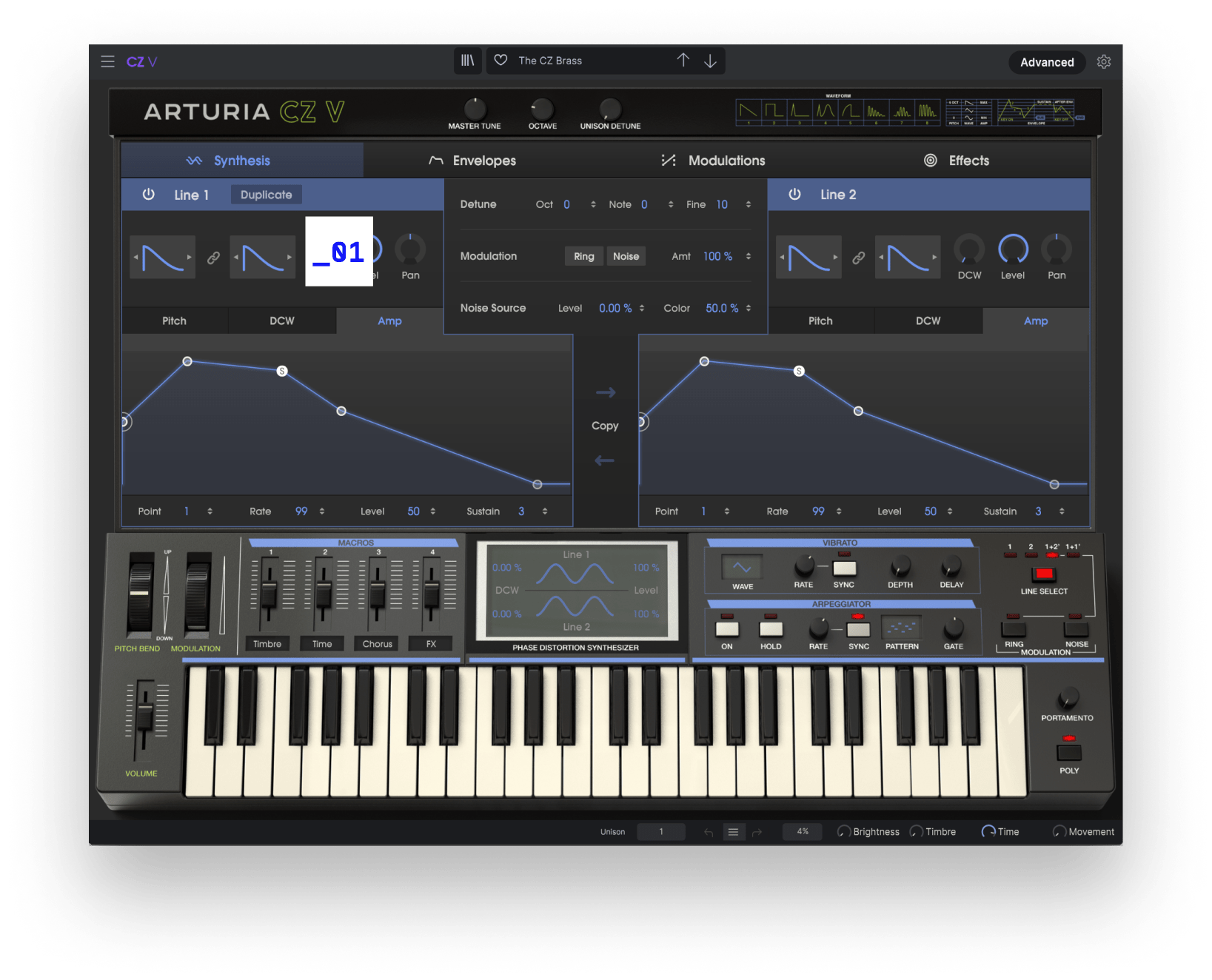
Escúchalo
en acción
¿Sería posible crear un álbum entero solo con sonidos del CZ V?
Tropical Serenade
Chunky House
Cinematic
DrumBass Desires
Lost Land
Mouvances
Nostalgia
SlowCore
Trance
Presets
El CZ V es sorprendente porque puede sonar como un sintetizador analógico.
Puede sonar como un DX. Puede sonar como una Onda PPG. Puede generar pads y coros muy sugerentes. Y mucho más. Echa un vistazo a lo más destacado de su biblioteca integrada de más de 500 presets.
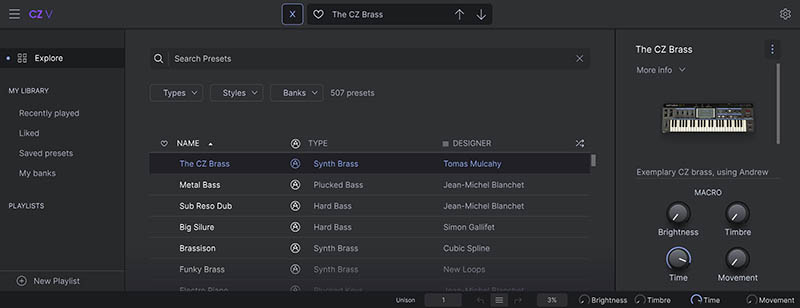
Artist
Corner
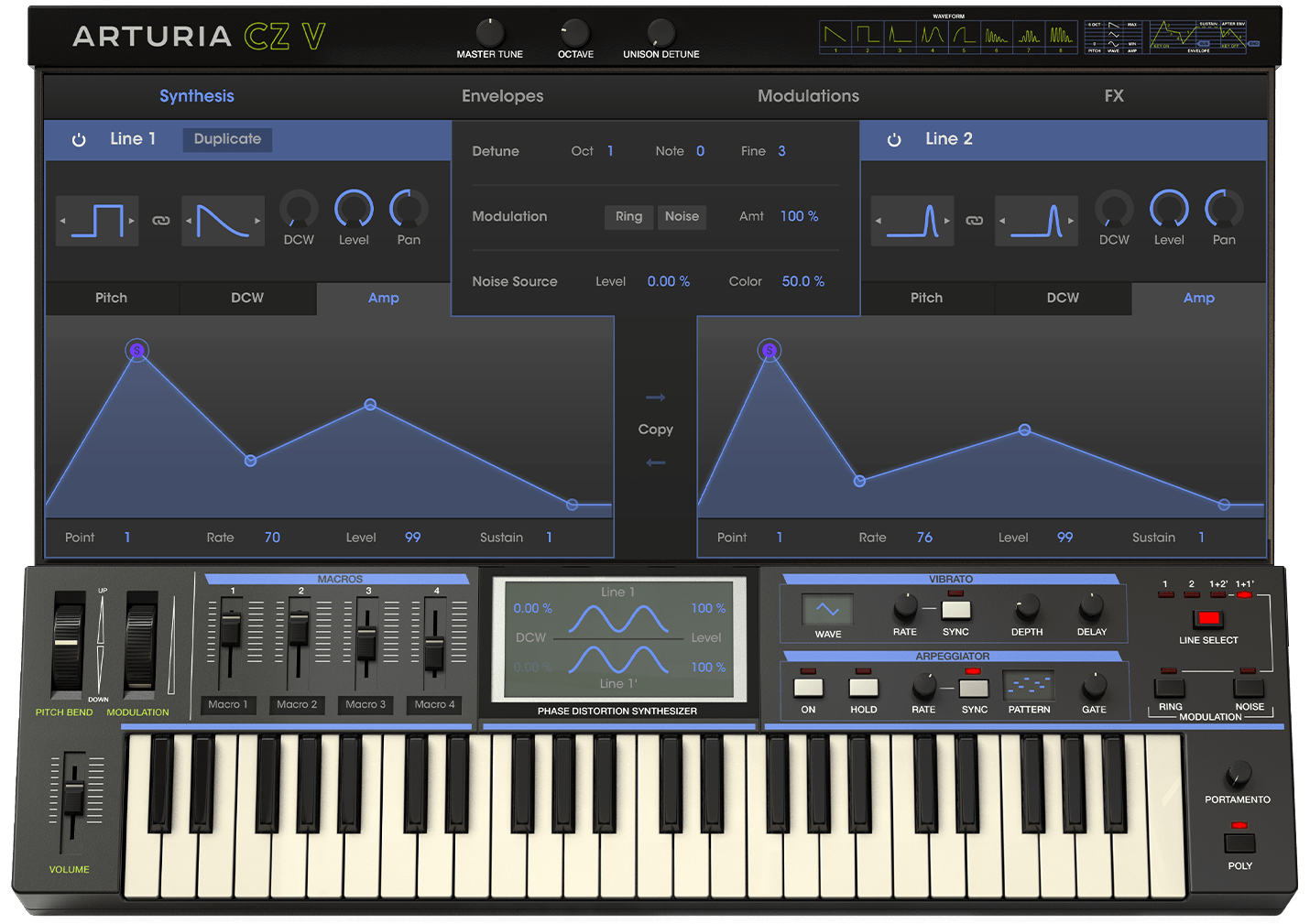
Incluido en la
V Collection 11 Pro
Este instrumento forma parte de la V Collection Pro, una colección prémium de instrumentos virtuales diseñados para que explores el sonido como nunca habías podido.
Desde teclados modelados con precisión hasta motores híbridos de síntesis y sonidos acústicos registrados magistralmente: cada instrumento está mejorado para el proceso de producción actual. La V Collection ofrece los mejores sonidos de teclado de todos los tiempos.
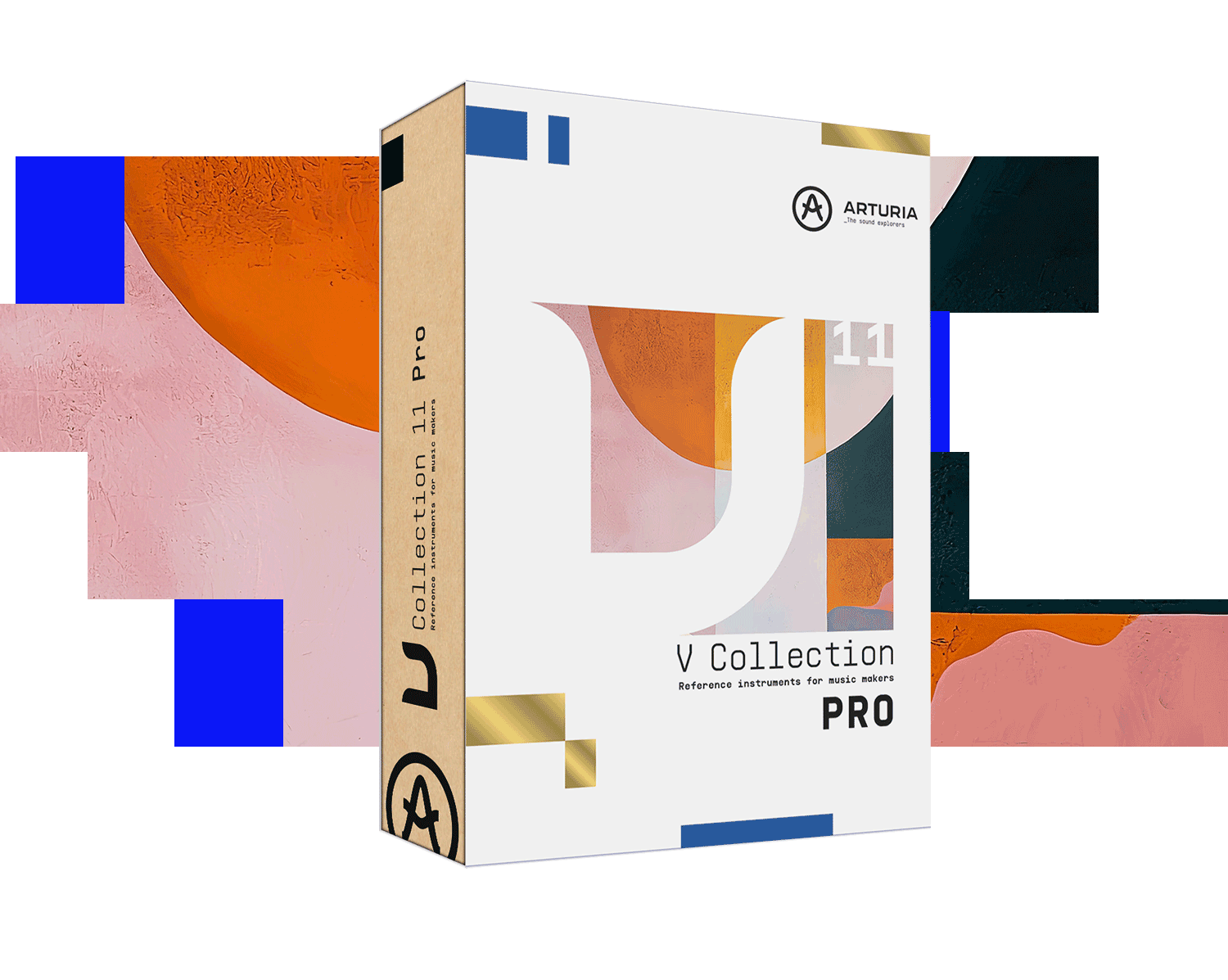
Las funciones
que necesitas

Gallery
Main Features
Two synthesis lines and independent noise source
All CZ-101/CZ-1000 original parameters
8 original waveform and custom waveform editor
Original CZ SysEx import
CZ, DADSR and Multi-Segments envelopes (syncable and loopable) to control pitch, DCW and amplitude
2 Modulation envelopes
4 assignable macros
Advanced modulation matrix
A Sample and Hold module, 2 LFOs with 6 waveforms, 3 sources combinators and an Arpeggiator
4 FXs slots that can be routed in serie or per synthesis line
A synthesis line state viewer for real-time feedback
Emulation of the original CZ DAC
32 voices of polyphony
Up to 8 voices of unison with unison detune
Over 400 factory presets



